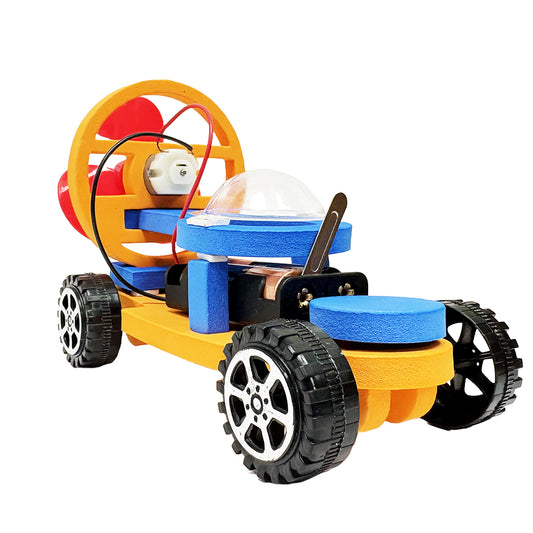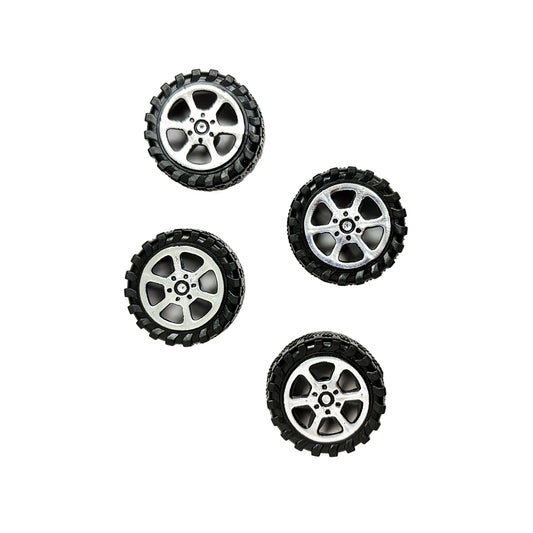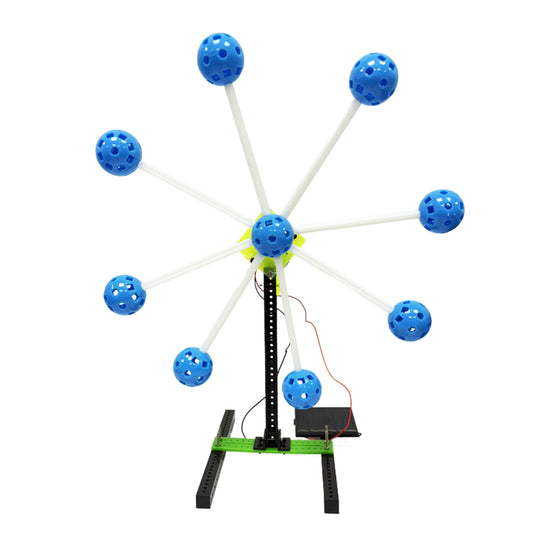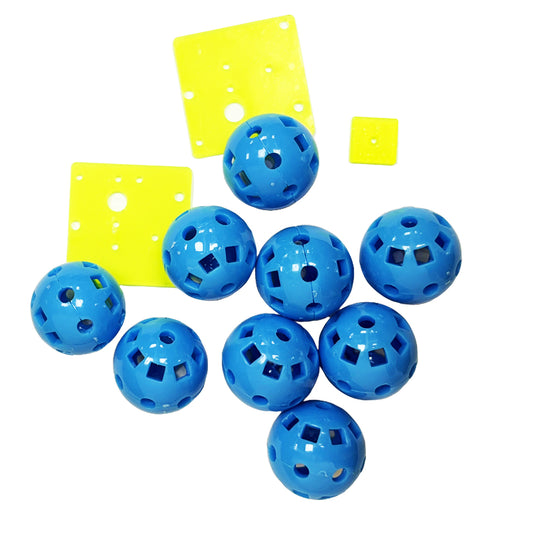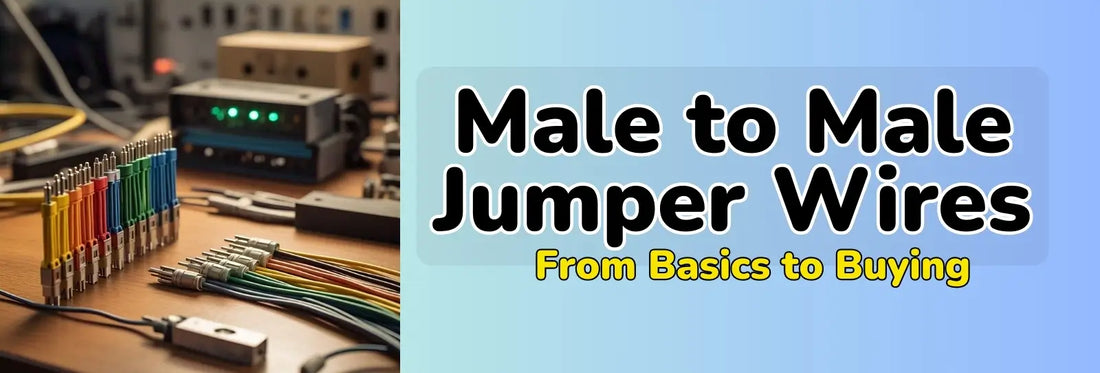
Male to Male Jumper Wires: From Basics to Buying
IEM RoboticsTable Of Content
- What is Male to Male Jumper Wires?
- Why Male to Male Jumper Wires Are Important
- Key Components of Male to Male Jumper Wires
- How to Use Male to Male Jumper Wires
- Different Types of Male to Male Jumper Wires
- Arduino Male to Male Jumper Wires
- Importance of Male to Male Jumper Wires in Arduino Projects
- How to Use Male to Male Jumper Wires with Arduino
- Male to Male Jumper Wires: Price and Affordability
- Conclusion
Male to male jumper wires are a flexible and easily detachable cable, designed to accommodate varying wire requirements. These jumper wires serve as an efficient alternative to soldering, enabling easy interconnection between breadboards, circuit boards, and testing equipment.
Widely used with Raspberry Pi, Arduino, and other development boards, these wires are indispensable in PCB projects, motherboard connections, and breadboard setups. Their reusable nature makes them ideal for rapid prototyping, enabling hassle-free plug-and-play connectivity for multiple applications. Whether you're working on an embedded system, IoT project, or testing new circuits, these jumper wires are a must-have for any electronics enthusiast.
What is Male to Male Jumper Wires?
Male-to-male jumper wires are electrical cables that feature male connectors on both ends. The term "male" indicates that the connectors have exposed metal pins designed to fit into female connectors, such as sockets or headers. These jumper wires male to male allow for temporary connections in electronic circuits without soldering.
Typically, the wire is made from high-quality copper or similar conductive material. Coated with insulation for safety. The ends of male-to-male jumper wires are often equipped with DuPont connectors or pins compatible with breadboards, this makes it suitable for use with standard breadboards and various other connectors in the electronics field.
Why Male to Male Jumper Wires Are Important
Jumper wires are vital in prototyping and circuit testing, mainly when using breadboards. A breadboard is a reusable platform for constructing electronic circuits that eliminates the need for soldering and allows for quick modifications to the circuit. This makes it a favored tool for testing and experimentation. Male-to-male jumper wires are specifically crafted for this purpose, providing a straightforward and efficient way to create temporary connections.
Here are some key reasons why jumper wires male to male are essential:
● Temporary Connections: They enable you to link components without needing permanent soldering, which is beneficial when testing various configurations.
● Flexibility: Male-to-male jumper wires are available in different lengths, colors, and gauges, making them versatile for various circuit types and setups.
● Breadboard Compatibility: These wires are commonly used with breadboards because of their standard pin configuration. They easily insert into the holes and connect different components.
● Ease of Use: They streamline the process of quickly and efficiently connecting components, which is crucial for prototyping and debugging circuits.
Key Components of Male to Male Jumper Wires
Let’s explore the different components of a typical male to male jumper wires description:.
● Connector Pins (Male Connectors):
These are the exposed metal pins at both ends of the jumper wire. Male connectors are designed to fit into female sockets or headers, such as those found on a breadboard or integrated circuit (IC) pins. They usually feature a spring-loaded mechanism to ensure a secure connection and minimize the risk of disconnection during use.
● Wire Gauge:
The wire gauge indicates its thickness and is crucial in determining the wire's current-carrying capacity. The standard gauge for jumper wires used in breadboarding is typically 22 AWG (American Wire Gauge). However, a thicker wire gauge may be necessary for higher-power applications.
● Insulation:
The insulation surrounding the wire is generally made from PVC or silicone, which provides safety and prevents short circuits by keeping the conductor isolated from other components or conductive surfaces.
● DuPont Connectors:
Dupont Wire are modular connectors frequently used in male-to-male jumper wires. They are designed to connect individual wires to pins, headers, or sockets on breadboards. These connectors are often color-coded to help users quickly distinguish between different types of cables or connections.
● Length of Wire:
Jumper wires are available in various lengths, typically ranging from 10 cm to 30 cm. The selection of wire length is essential based on the layout and design of your circuit.
How to Use Male to Male Jumper Wires
Using male to male jumper wires is quite simple, but knowing the proper methods can improve your ability to create dependable circuits. Here’s how to use these jumper wires effectively:
1. Using Jumper Wires with Breadboards
Breadboards are essential for building and testing circuits without soldering. Male to male jumper wires are typically used to link components on a breadboard. Follow these steps:
● Insert the Male Pin into the Breadboard: Each breadboard features rows and columns of holes that hold jumper wire pins. Insert the male connector into one of the holes to establish a connection.
● Connect the Other End: Once the first end is connected to the breadboard, attach the other end of the jumper wire to another component, like a sensor, LED, or microcontroller.
● Check for Proper Connection: Ensure the jumper wire is securely inserted into the breadboard and the connecting component. Loose connections can lead to circuit failures or unreliable performance.
2. Creating Temporary Circuit Connections
Male to male jumper wires are ideal for forming temporary connections between electronic components. This versatility is crucial for experimentation and testing:
● Make Pin-to-Pin Connections: You’ll need to connect corresponding pins between components, such as linking a microcontroller’s GPIO pin to an LED’s anode pin or connecting the ground pin to different elements.
● Using for Testing: Male-to-male jumper wires allow you to quickly test and adjust connections without desoldering or rewriting parts of a permanent circuit.
3. Interfacing with Other Components
You can utilize male to male jumper wires to connect various types of components, such as sensors, LEDs, or even integrated circuits (ICs), to a breadboard or microcontroller:
● Connecting Sensors: Jumper wires are essential when connecting a temperature sensor to a microcontroller like an Arduino.
● Wiring for Power: If you’re designing a circuit that requires a power source, jumper wires can connect the power pins of your components to the VCC (voltage common collector) or ground pins.
Different Types of Male to Male Jumper Wires
While male to male jumper wires share a similar structure, various types are tailored for specific applications. Here are some of the common types:
● Standard Male-to-Male Jumper Wires are the most prevalent type in small kits. They work well with breadboards and are often color-coded for easy identification.
● Flexible Male-to-Male Jumper Wires: These wires, made from a more flexible and durable material, can bend easily. They are perfect for tight spaces or complex circuits that require movement.
● Ribbon Jumper wires consist of several smaller wires bundled together in a flat, ribbon-like format. They help make multiple connections neatly and organized.
● Silicone Male to Male Jumper Wires: Featuring high-quality silicone insulation, these jumper wires are more flexible and durable than standard PVC-coated options. They also offer better resistance to high temperatures, making them suitable for industrial or high-power applications.
● DuPont Male-to-Male Jumper Wires: Widely used in professional and hobbyist settings, DuPont jumper wires often come with 2.54mm pin headers that easily connect to various boards, including Arduinos, Raspberry Pi, and other microcontroller platforms.
Arduino Male to Male Jumper Wires
In Arduino projects, male to male jumper wires connect components such as sensors, LEDs, and motors to the Arduino board. These wires offer a quick, solder-free method for linking Arduino pins to external devices, making them ideal for prototyping and experimentation.
Importance of Male to Male Jumper Wires in Arduino Projects
● Direct Connections:
Arduino jumper wires male to male are designed to connect directly to the female header pins on the Arduino. This straightforward setup simplifies the process of connecting sensors, actuators, and other external components. This quick, no-solder method saves time for everyone involved in project development.
● Versatility:
Arduino projects often require interconnecting various components. Male-to-male jumper wires come in various colors and lengths, which helps organize and manage connections. Color-coded wires also make distinguishing between power, ground, and data transfer connections easier.
● Breadboard-Friendly:
Since most Arduino projects are developed on breadboards for testing and rapid prototyping, jumper wires are essential for linking the Arduino to the breadboard’s pins. Male to male jumper wires fit seamlessly into the breadboard holes, ensuring secure connections between components without soldering.
● Solder-Free Design:
One key benefit of using jumper wires in Arduino projects is that they allow quick prototyping without soldering components. This makes it easier to test circuits, swap out parts, or make quick adjustments without committing to permanent connections.
● Working with Arduino Shields:
Many Arduino projects utilize Arduino shields, which are additional boards that enhance the functionality of the base Arduino. The jumper wires male to male enable you to connect the shield’s pins to the Arduino’s pins, making integrating various sensors, displays, or actuators simple.
How to Use Male to Male Jumper Wires with Arduino
The process of using male to male jumper wires with Arduino is straightforward. Here’s how you can get started:
● Identify the Pins on the Arduino Board:
Before connecting jumper wires, identify the specific pins you will use on the Arduino. For instance, if you’re working with a servo motor, you will connect the servo's control wire to a digital pin on the Arduino.
● Choose the Right Wire Length and Color:
Select jumper wires based on the distance between your Arduino board and your connecting components. Choose wire lengths that provide just enough slack to reach between pins without excessive extra length. To distinguish connections color coding plays a vital role. For .eg: red is typically for power, black for ground, and other colors, like yellow or blue, for data.
● Make the Connections:
Insert one end of the jumper wire into the Arduino board’s pin (such as the digital output pin for controlling an LED or a sensor) and the other end into the appropriate hole on the breadboard or sensor. For example, you might connect a jumper wire from the GND pin of the Arduino to the ground rail of your breadboard to establish the circuit’s common ground.
● Organize and Test:
As you make connections, organize your wires and ensure they are securely inserted into the breadboard or Arduino pins. Once you have connected everything, upload your code to Arduino and test the circuit for correct functionality.
Male to Male Jumper Wires: Price and Affordability
Male-to-male jumper wires are generally affordable and offer great value for electronics enthusiasts. Their price varies based on factors such as wire length, quality, and brand. Basic sets with fewer wires or lower-quality materials tend to be more budget-friendly, while higher-quality or longer sets come at a slightly higher cost.
Premium options featuring durable connectors or heat-resistant insulation are available for those seeking enhanced durability and performance. Despite these variations, jumper wires remain an essential and cost-effective tool for makers and hobbyists, making prototyping and circuit building more convenient and accessible.
Conclusion
Male-to-male jumper wires are essential for anyone involved in electronics. Their flexibility, user-friendliness, and ability to create temporary connections without soldering make them ideal for prototyping, circuit testing, and experimentation. Knowing these wires' different types, uses, and proper handling will improve your ability to build reliable and efficient electronic circuits.
Whether working on a project with a breadboard or linking various components in a temporary arrangement, male-to-male jumper wires offer a straightforward and effective solution to fulfil your requirements. By selecting the appropriate length, gauge, and insulation, you can maximize the benefits of male to male jumper wires in your upcoming electronics project.



